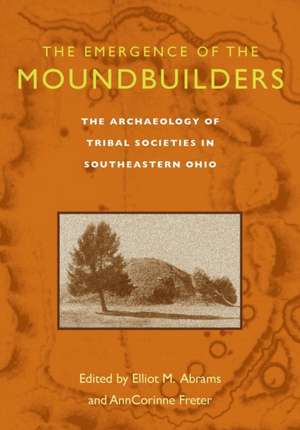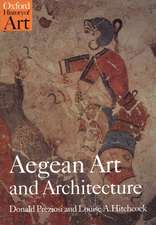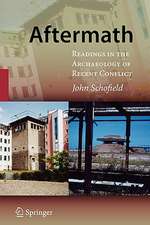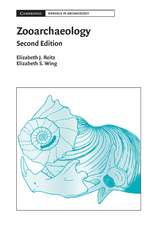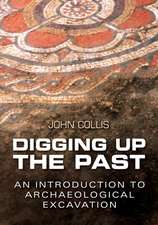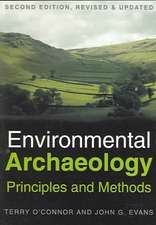The Emergence of the Moundbuilders: The Archaeology of Tribal Societies in Southeastern Ohio
Autor Elliot M. Abrams Contribuţii de Anncorinne Freteren Limba Engleză Paperback – 29 mar 2005
Native American societies, often viewed as unchanging, in fact experienced a rich process of cultural innovation in the millennia prior to recorded history. Societies of the Hocking River Valley in southeastern Ohio, part of the Ohio River Valley, created a tribal organization beginning about 2000 bc.
Edited by Elliot M. Abrams and AnnCorinne Freter, The Emergence of the Moundbuilders: The Archaeology of Tribal Societies in Southeastern Ohio presents the process of tribal formation and change in the region based on analyses of all available archaeological data from the Hocking River Valley. Drawing on the work of scholars in archaeology, anthropology, geography, geology, and botany, the collection addresses tribal society formation through such topics as the first pottery made in the valley, aggregate feasting by nomadic groups, the social context for burying their dead in earthen mounds, the formation of religious ceremonial centers, and the earliest adoption of corn.
Providing the most current research on indigenous societies in the Hocking Valley, The Emergence of the Moundbuilders is distinguished by its broad, comparative overview of tribal life.
Edited by Elliot M. Abrams and AnnCorinne Freter, The Emergence of the Moundbuilders: The Archaeology of Tribal Societies in Southeastern Ohio presents the process of tribal formation and change in the region based on analyses of all available archaeological data from the Hocking River Valley. Drawing on the work of scholars in archaeology, anthropology, geography, geology, and botany, the collection addresses tribal society formation through such topics as the first pottery made in the valley, aggregate feasting by nomadic groups, the social context for burying their dead in earthen mounds, the formation of religious ceremonial centers, and the earliest adoption of corn.
Providing the most current research on indigenous societies in the Hocking Valley, The Emergence of the Moundbuilders is distinguished by its broad, comparative overview of tribal life.
Preț: 241.58 lei
Nou
Puncte Express: 362
Preț estimativ în valută:
46.23€ • 48.39$ • 38.47£
46.23€ • 48.39$ • 38.47£
Carte tipărită la comandă
Livrare economică 31 martie-14 aprilie
Preluare comenzi: 021 569.72.76
Specificații
ISBN-13: 9780821416105
ISBN-10: 0821416103
Pagini: 264
Dimensiuni: 178 x 254 x 18 mm
Greutate: 0.49 kg
Ediția:1
Editura: Ohio University Press
Colecția Ohio University Press
ISBN-10: 0821416103
Pagini: 264
Dimensiuni: 178 x 254 x 18 mm
Greutate: 0.49 kg
Ediția:1
Editura: Ohio University Press
Colecția Ohio University Press
Recenzii
“This work’s anthropological perspective goes beyond more traditional treatments of prehistory. The focus on the tribal level of socio-political organization is particularly noteworthy. The result is an updated and very useful treatment of Hocking Valley prehistory.”—Brian G. Redmond, Director of Science and John Otis Hower Chair of Archaeology, The Cleveland Museum of Natural History
Notă biografică
Elliot M. Abrams, a professor of anthropology at Ohio University, has conducted field research for more than two decades in Mexico, Honduras, Guatemala, and Belize, as well as in the Ohio River Valley. He is the author of How the Maya Built Their World.
AnnCorinne Freter is a professor of anthropology at Ohio University and has conducted archaeological research since 1982 in Mexico, Guatemala, Honduras, and the Ohio River Valley. She is the coauthor of Copán: The Rise and Fall of an Ancient Mayan Kingdom.
AnnCorinne Freter is a professor of anthropology at Ohio University and has conducted archaeological research since 1982 in Mexico, Guatemala, Honduras, and the Ohio River Valley. She is the coauthor of Copán: The Rise and Fall of an Ancient Mayan Kingdom.
Cuprins
- Preface
- Acknowledgments
- 1. The Archaeological Research History and Environmental Setting of the Hocking Valley
Elliot M. Abrams and AnnCorinne Freter - 2. A Preliminary GIS Analysis of Hocking Valley Archaic and Woodland Settlement Trends
Nicole I. Stump, James Lein, Elliot M. Abrams, and AnnCorinne Freter - 3. The Bremen Site: A Terminal Late Archaic Period Upland Occupation in Fairfield County, Ohio
Albert M. Pecora and Jarrod Burks - 4. The Walker Site: An Archaic/Woodland Hunting-Collecting Site in the Hocking Valley
Elliot M. Abrams and Sara DeAloia - 5. Late Archaic Community Aggregation and Feasting in the Hocking Valley
Marjorie Heyman, Elliot M. Abrams, and AnnCorinne Freter - 6. Woodland Communities in the Hocking Valley
David Crowell, Elliot M. Abrams, AnnCorinne Freter, and James Lein - 7. Woodland Ceremonialism in the Hocking Valley
Jeremy Blazier, AnnCorinne Freter, and Elliot M. Abrams - 8. The Swinehart Village Site: A Late Woodland Village in the Upper Hocking Valley
John F. Schweikart - 9. The Allen Site: A Late Prehistoric Community in the Hocking River Valley
Elliot M. Abrams, Christopher Bergman, and Donald A. Miller - 10. Late Prehistoric Agriculture and Land Use in the Hocking Valley
Dee Anne Wymer - 11. The Impact of Maize on Settlement Patterns in the Hocking Valley
Joseph E. Wakeman - 12. Tribal Societies in the Hocking Valley
Elliot M. Abrams and AnnCorinne Freter - References
- Index
Descriere
Native American societies, often viewed as unchanging, in fact experienced a rich process of cultural innovation in the millennia prior to recorded history. Societies of the Hocking River Valley in southeastern Ohio, part of the Ohio River Valley, created a tribal organization beginning about 2000 bc.
